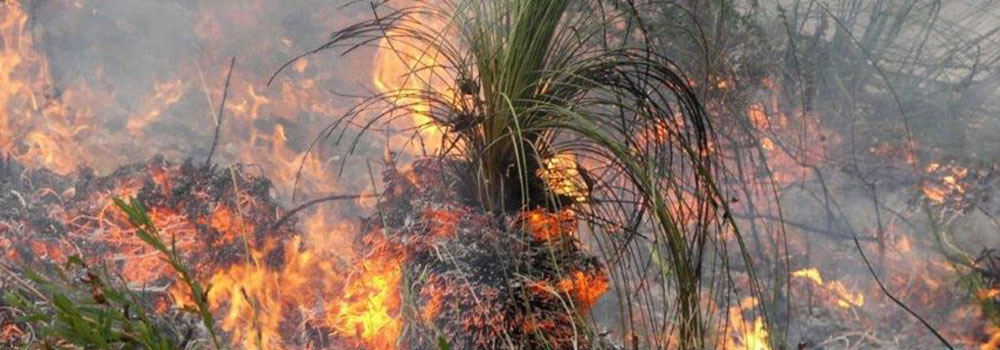Bush Fire Prevention

Bush Fire Prevention
The lead agency for response to bush fire is NSW RFS and Fire & Rescue NSW (in urban areas)
Reducing bushfire risk on private property
Permission must be obtained to remove bushland and trees, although up to 10% of the tree canopy may be pruned without a permit.
If you believe that bushland and trees have to be removed to assist in developing an ‘asset protection zone’ you must apply for a hazard reduction certicate through the Rural Fire Service.
For the clearing of any other vegetation from your land permission from Council must be obtained. Native trees and bushland are protected by law and substantial fines apply for clearing without a permit. Grass clippings, leaves and other dried plant material should be removed in vegetation clean-ups.
A build up of these materials around your home could ignite, threatening your property from an ember, hours before or after a bush fire impacts your immediate area.
Illegal and suspicious activity
Illegal dumping in reserves can also be a major bush fire hazard to you and your neighbour. If you see any illegal dumping please report it immediately to your local Council. Mobile phone camera footage can assist them in carrying out successful prosecutions.
If you observe any suspicious behaviour call:
Crime Stoppers on 1800 333 000
To report a fire emergency call Triple Zero (000)
Simple steps to reduce the risk to your property
- Create an ‘asset protection zone’ within your property by removing garden debris such as leaves and bark.
- Remove cardboard, paper from under or near houses. Clear weeds away from wooden structures such as old garden sheds or fences.
- Consider installing metal roller shutters over glass.
- Locate woodpiles away from fences, house and sheds.
- Clean dead branches and leaves from gutters. Lop overhanging branches near the roof, as long as it’s less than 10% of the tree canopy. No approval is then required.
- Enclose open areas under the house.
- Replace plastic insect screens with metal mesh screens.
- Check that taps, hoses, pumps and sprinklers are ready for use and any water tanks are full.
- Store flammable liquids away from the house.
- Mow your grass regularly.
- Seal all gaps in external roof and wall cladding so hot embers cannot enter.
- If you have a water tank, dam or swimming pool, install ‘SWS’ signs which can help in an emergency. These are free from your local re station.
- Make sure any fences which you build are non- combustible.
- Special conditions may apply to your home if it is located in an area speci ed at risk of bush re. (Australian Standard AS 3959-2009 ‘Construction of buildings in bush re-prone areas’.)
- If you are concerned about a bush re hazard on public property please contact the Rural Fire Service.
Tips to keep your home and family safe
- Ensure you have a bush fire survival plan. See rfs.nsw.gov.au for tips and templates on making a plan for your property.
- A well prepared home will increase the safety of fire fighters and is more likely to survive a bush fire evenif you leave early.
- Know your bush fire alert levels. Know the bush fire danger rating.
- Keep track of fires in your area. Download the free RFS FIRES NEAR ME NSW App for Apple or Android
As a bush fire approaches
- Plug downpipes with rags or plastic bags half-filled with sand.
- Fill gutters with water.
- Have buckets of water filled and wet towels placed around the house ready to use in putting out small (spot) fires.
- Fill the bathtub with water in case of mains water failure.
- Keep a battery operated am/fm radio handy for updates.
Useful Contacts
If you need help with making your property safe, visit rfs.nsw.gov.au or contact the following:
- NSW Rural Fire Service – Warringah Pittwater District Phone: 9450 3000
- Your local NSW Fire Brigade Station
- Pittwater Council: Phone: 02 9970 1111 or northernbeaches.nsw.gov.au
For information on fire restrictions or updates on bushfires contact the Rural Fire Service:
Phone: 1800 NSW RFS (1800 679 737)
rfs.nsw.gov.au
Know your risk
You can also check if your property is in bush fire prone area (and flood and coastal erosion risk) on our hazards map and find out what you can do to protect your family and home.
Sources Northern Beaches Council
Are you prepared for a bushfire?
Find out how